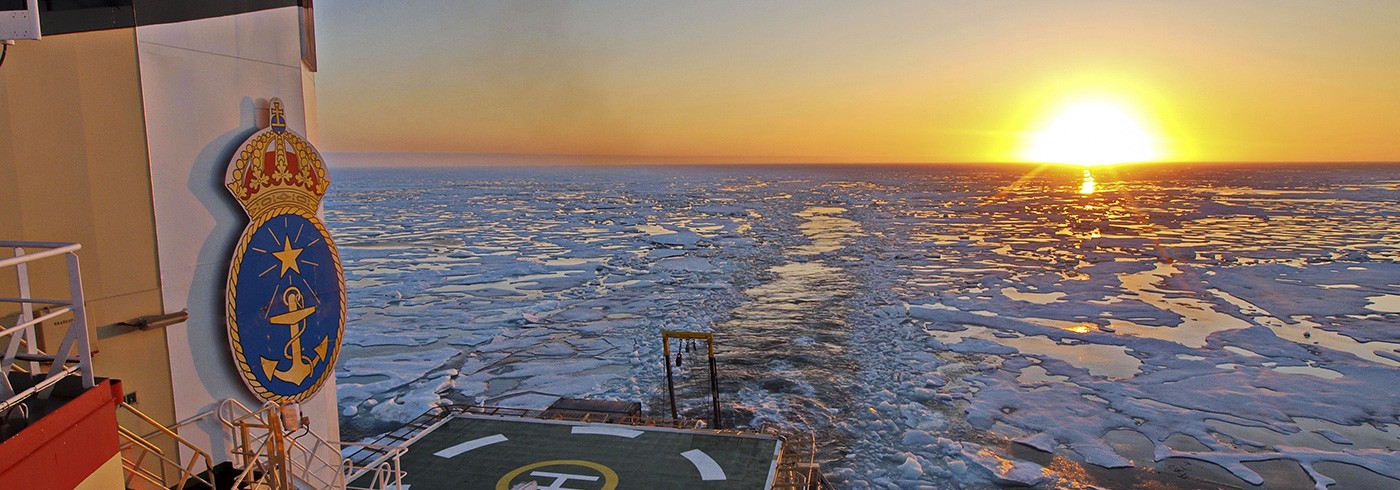Sources and sinks of carbon dioxide in a changing Arctic Ocean
5 July 2014 - 4 October 2014The Arctic Ocean is now in a state of rapid transition and during the past 30 years the marked reduction in sea-ice cover has been witnessed in instrumental records. By shifts in the Arctic Ocean carbon cycle there will be a potential feedback of greenhouse gases to the global climate system. Uptakes of anthropogenic carbon dioxide from the atmosphere and microbial decay of terrestrial organic matter is also affecting the evolution of ocean acidification. This will likely impact the economy, living conditions and environment of future society, and not only these at high latitudes.
The aim of this project is to increase our understanding of the feedbacks that exists among components of the Arctic Ocean carbon system. This includes assessments of biogeochemical carbon transformations in the water column, air-sea exchange of CO2 on the large shelf areas and water exchange between the shelf seas and the deep central basins. We also assessed the natural ocean acidification, i.e. acidification caused by biogeochemical processes.

Sections of silicate concentration (a & d), Apparent Oxygen Utilization (b & e), and fugacity of carbon dioxide (c & f) across G (left) and D (right).
Water samples were collected using a rosette system equipped with 24 bottles during the whole SWERUS-C3 cruise, i.e. along the outer Siberian shelf seas; Laptev, East Siberian and Chukchi, as well as at the shelf slopes and parts of the Lomonosov Ridge. The interaction between the shelf and the deep basin is clearly seen in sections by the shelf break. In section G was an elevated silicate concentration observed in the surface water, which likely is a reminiscence of run-off that has been mixed into the upper water column (figure 1a). The oxygen and fugacity of carbon dioxide (fCO2) properties illustrate that photosynthesis is negligible in the surface water, but that there is a small sub-surface of decay of organic matter that occurs at approximately 50 metres depth (figure 1b and c). On the contrary there were strong signals of shelf-basin exchange with clear signs of decay of organic matter at section D (figure 1d-f). But this signal weakens when moving away from the shelf.



